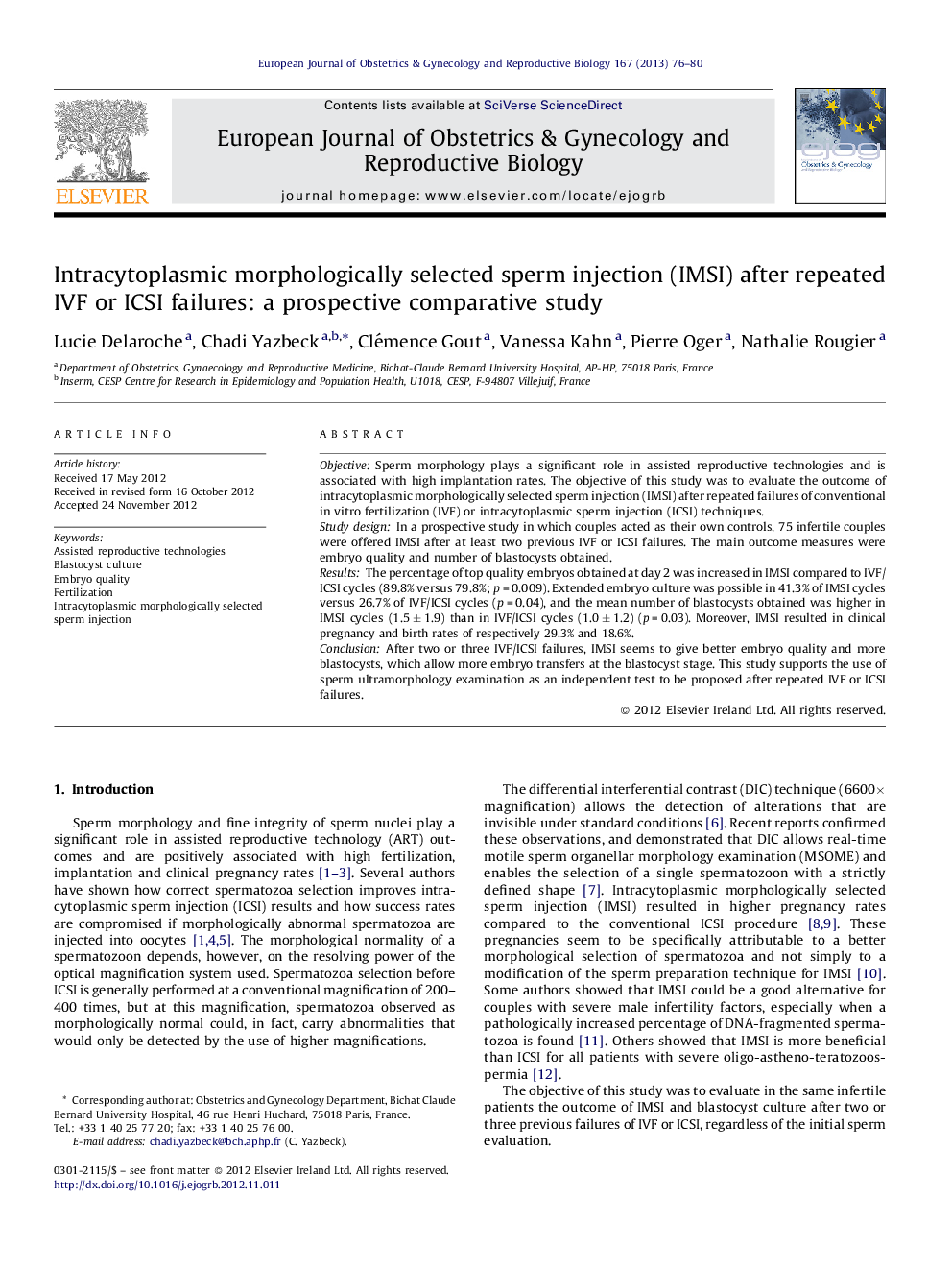| Article ID | Journal | Published Year | Pages | File Type |
|---|---|---|---|---|
| 6174248 | European Journal of Obstetrics & Gynecology and Reproductive Biology | 2013 | 5 Pages |
ObjectiveSperm morphology plays a significant role in assisted reproductive technologies and is associated with high implantation rates. The objective of this study was to evaluate the outcome of intracytoplasmic morphologically selected sperm injection (IMSI) after repeated failures of conventional in vitro fertilization (IVF) or intracytoplasmic sperm injection (ICSI) techniques.Study designIn a prospective study in which couples acted as their own controls, 75 infertile couples were offered IMSI after at least two previous IVF or ICSI failures. The main outcome measures were embryo quality and number of blastocysts obtained.ResultsThe percentage of top quality embryos obtained at day 2 was increased in IMSI compared to IVF/ICSI cycles (89.8% versus 79.8%; p = 0.009). Extended embryo culture was possible in 41.3% of IMSI cycles versus 26.7% of IVF/ICSI cycles (p = 0.04), and the mean number of blastocysts obtained was higher in IMSI cycles (1.5 ± 1.9) than in IVF/ICSI cycles (1.0 ± 1.2) (p = 0.03). Moreover, IMSI resulted in clinical pregnancy and birth rates of respectively 29.3% and 18.6%.ConclusionAfter two or three IVF/ICSI failures, IMSI seems to give better embryo quality and more blastocysts, which allow more embryo transfers at the blastocyst stage. This study supports the use of sperm ultramorphology examination as an independent test to be proposed after repeated IVF or ICSI failures.
